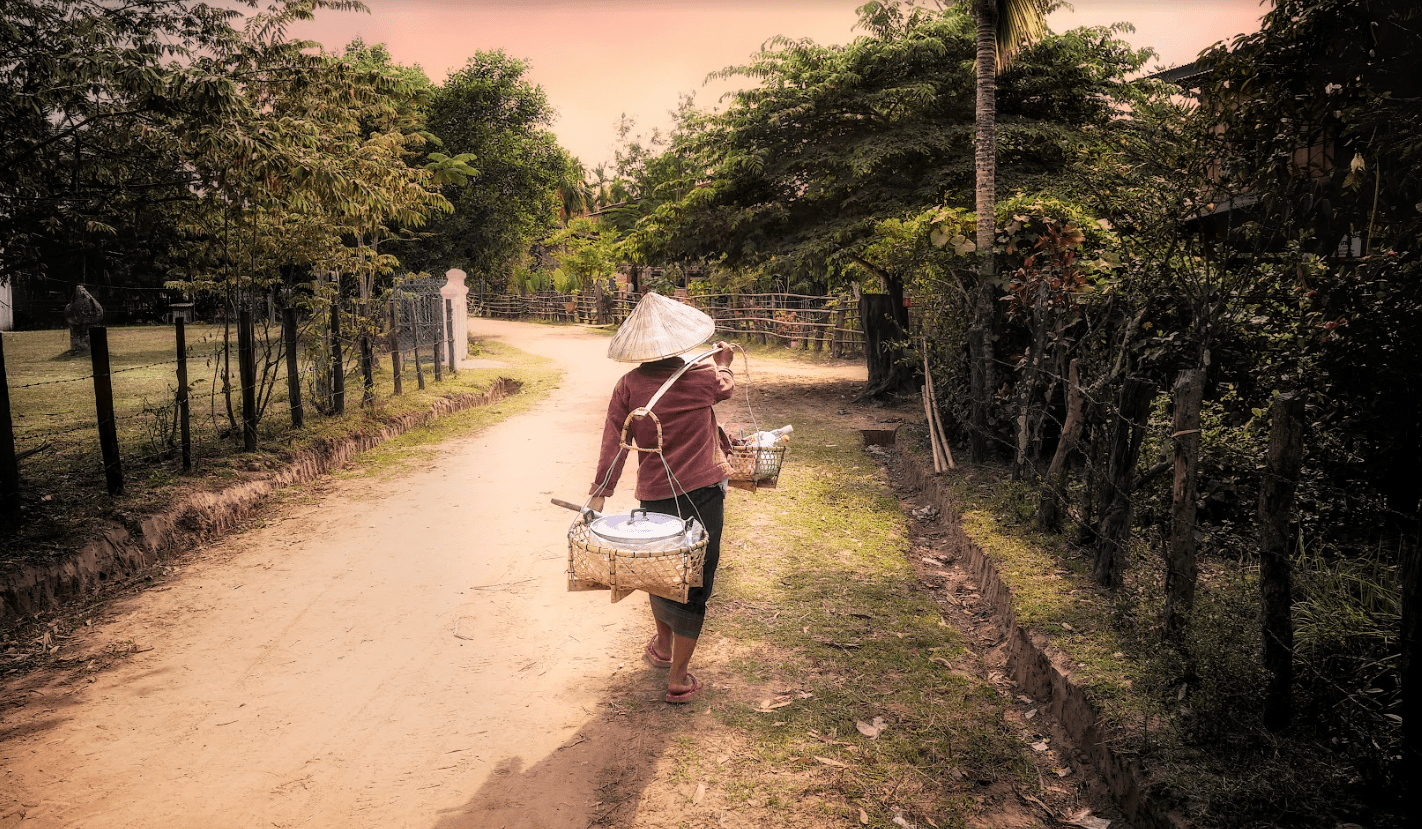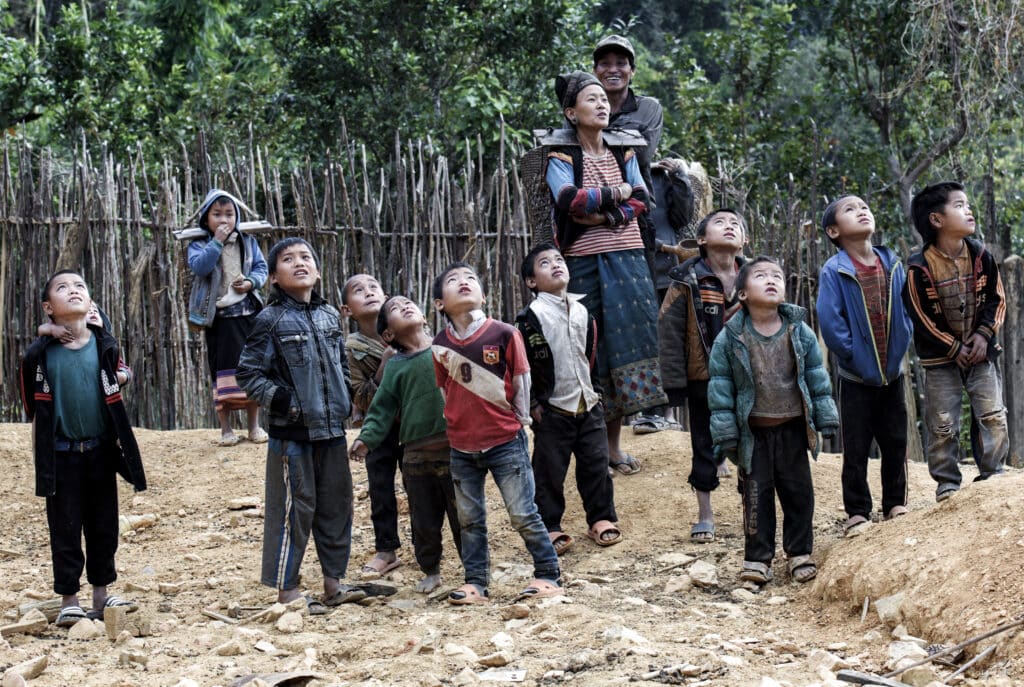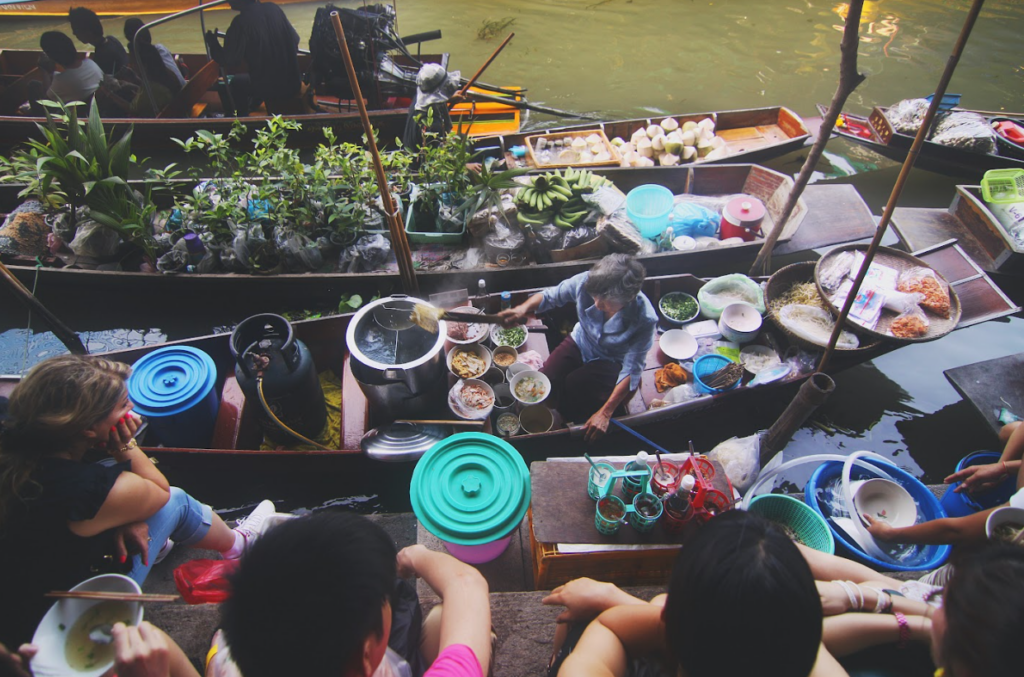
The fascinating traditions upheld in Laotian culture are vastly different to those in western society. Want to experience a fascinating insight into this unique culture? We’ve got everything you need to know.
The Xout Lao – Laos Traditional Dress
The national Laotian costume is called the xout lao, meaning ‘Lao outfit’. This traditional dress in Laos, which has different components, can look slightly different depending on the occasion and the region in which it is being worn. The xout lao is worn by men, women and children, although the style varies.
Men wearing a xout lao for a formal occasion will usually wear a hip-length tailored jacket, known as a Nehru jacket, made of white silk. This is usually accompanied by a wraparound piece of cloth on the lower body and long white socks.
Women traditionally wear a sinh, which is a handmade, silk skirt with a suea pat, a long-sleeved shirt which is wrapped around the body. The traditional dress for women in Laos is finished off with a pha biang, a thin garment which is women over one shoulder.
Laos Traditional Wedding Dress
Laos wedding ceremonies are large, joyful occasions for celebration consisting of processions, parades, ceremonies and finally, a wedding reception.
The traditional wedding dress for a bride in Laos consists of a silk sinh and blouse. The outfit is completed with gold jewellery, a bell and gold hair decoration.
If you’re lucky enough to be invited to celebrate a Laos wedding, you may want to wear traditional Laos clothing such as the components which make up the xout lao. If not, it’s absolutely fine to wear a long dress or trousers, a shirt and a tie. As a sign of respect, women should wear a scarf to cover their bare shoulders.
Traditional Lao Names
In Laos, many children are ‘nameless’ for the first year or so of their lives. During this time it is common to be given a short, one-syllable nickname. This nickname, or sue lin, often relates to a child’s behaviour or appearance and can be unflattering to deter evil spirits. An example of a Lao sue lin is Dham, meaning dark.
It is also a tradition in Laos for grandparents to decide on the given, registered Lao name of a new baby. They are sometimes assisted by a local astrologer. Common prefixes for Lao names are Bou- and Thong- which are then followed by a suffix such as Dara, which means star.

Laos Traditional Music
The national instrument of Laos is the khène, a mouth organ made up of around 8 pairs of bamboo pipes. The organ, which is typically 80 centimetres long and sounds like a violin when played, is featured in most of the traditional folk music in Laos. This type of Laos traditional music is known as lam.
In the 1960s, a new form of music developed in Laos known as lam luang. This form of song tends to feature lyrics alongside the various musical instruments which are played.
You can listen to some traditional Laotian music on Spotify.
Traditional Food in Laos
In Laos, fresh, tasty food is available on every corner. From traditional Laos street food stalls to food markets and local restaurants, there are different delicacies on offer to try throughout the day. The majority of the dishes you can try will be served with khao niew, a traditional Laotian sticky rice.
Traditional food in Laos includes fish steamed in banana leaves, ground meat salads, rice noodle soups and preserved pork sausages, all complete with fresh herbs, zesty lime juice and extra chillies if you like it spicy. One thing is for sure, you won’t go hungry in Laos.

Do you want to discover the traditions of Laos for yourself? Get in touch with Experience Travel Group today to plan your unforgettable trip to Southeast Asia.

